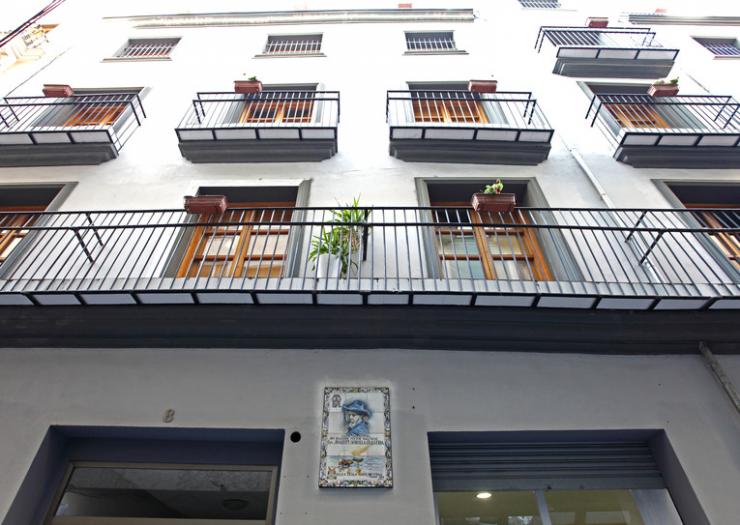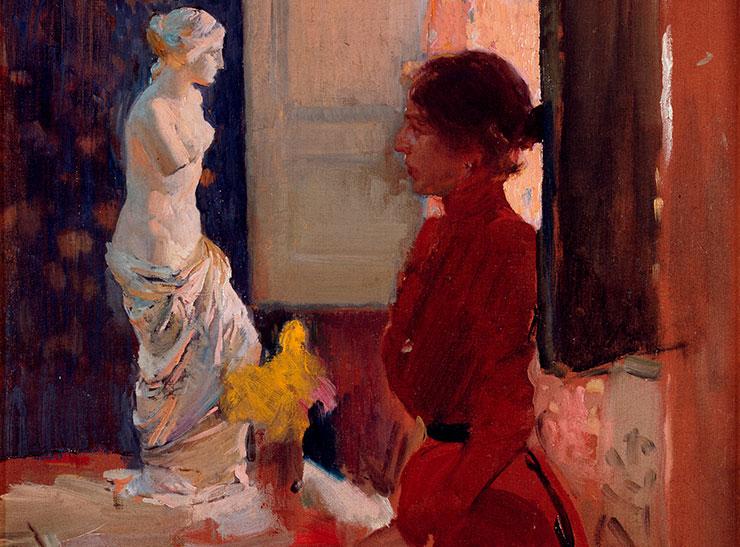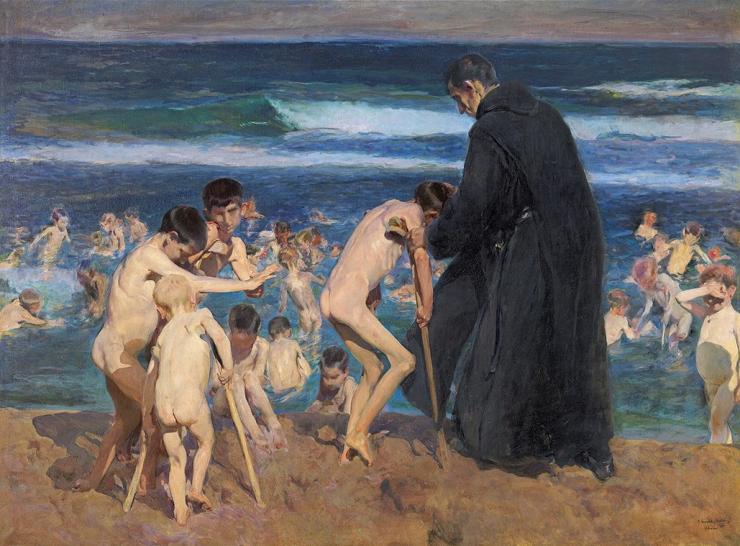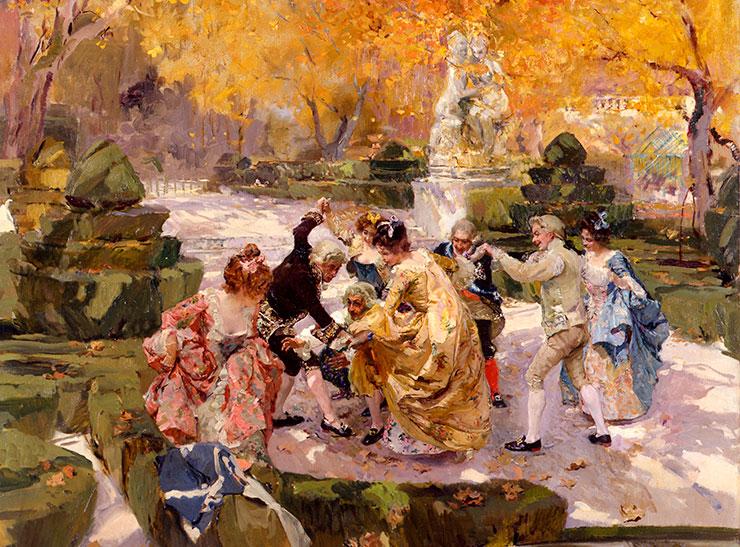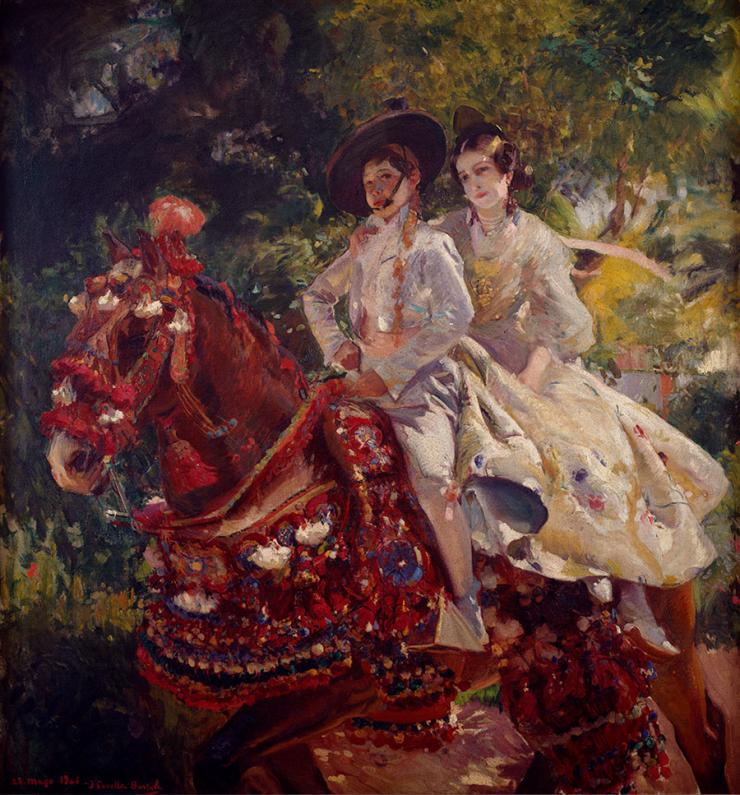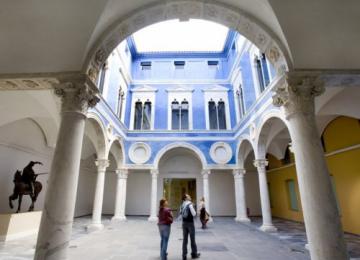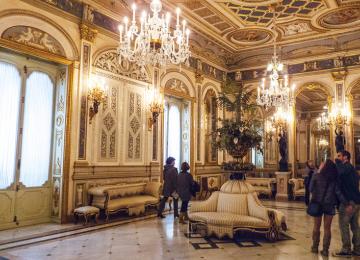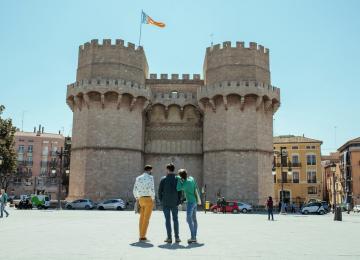Joaquín Sorolla: The painter of light
His legacy is the aesthetic hallmark of Valencia's identity
A delightful white dress of fine batiste wafts gently in the sea breeze, while the lady wearing it pulls the tulle veil on her hat away from her face. The tanned bodies of children playing on the beach of Malvarrosa blend with the violet hues of sand dampened by the crashing waves. Powerful oxen drag a boat, pulling it ashore after the day's fishing is done. All those scenes, so recognizable, are enveloped in a pure, inimitable light, like few others.
These and other iconic images are part of the legacy left by Joaquín Sorolla, the most universal painter to come out of Valencia, and they have transformed into hallmarks of the aesthetic identity of the city, a century after his death in 1923. It is worth visiting the places that were important in the author's early life, places that conditioned his first steps as he searched for his own style, and, above all, those that most profoundly provided an inspiration for his canvases. Not to mention the museums and local institutions that house his oil paintings. So let's start the itinerary.
EVENTS YEAR OF SOROLLA
His formative years
A ceramic plaque recalls that the master was born on February 27, 1863, at number 8 of Calle de las Mantas, a place very close to the fabric store that his parents ran at the time. Fashion and fabrics will always be a central theme in his artistic pieces, where he pays meticulous attention to the outfits of his subjects. Joaquín was baptized in the church of Santa Catalina. Only two years later, after a cholera epidemic claimed his parents’ lives, he moved in with his maternal aunt and uncle, who adopted him together with his sister Concha. He soon demonstrated a passion for drawing and painting, enrolling in the School of Artisans. Its current location (Avda. Reign of Valencia, 40) is home to an important pictorial collection, which includes a painting by Sorolla, "Ramillete de mandarinas" (Bunch of Mandarines), donated by his son, quite a few drawings and sketches from his formative period, as well as curious academic documents showing his attendance record.
Classic and cutting edge
From the School of Artisans he went to the Royal Academy of Fine Arts of San Carlos, whose teachings allowed him to progress in his art and where his report cards and numerous sketches are preserved. His progress during this time opened the doors to Rome and boarding school to study painting, paid for by the government office in Valencia after winning a painting contest. It would prove decisive in his training. He was also able to visit the Prado Museum and learn from the classics. Sorolla stood out for his talent, although the need to enter contests to continue receiving aid and make a name for himself forced him to make large-format oil paintings with historical themes, which were far removed from the desires of the young painter, who had by then discovered the latest in European art, especially the French impressionists. His only thought was to reflect the light of the Mediterranean in everyday scenes of his city, in a style of his own that has been called luminism. In 1888, he married Clotilde García del Castillo, who became his driving force, mother of his children and his great muse.
International recognition
But he would not be recognized until he painted “¡Triste herencia!” (Sad inheritance!), which shows a group of sick children being cared for by a monk from the Order of St. John of God at bath time on the shore of El Cabanyal beach. “I was busy one day working on one of my sketches of Valencian fishermen when I saw from afar a few naked boys in the water, and on the shore, watching them, the vigorous figure of a friar. It seems they had been taken in by the hospital of San Juan de Dios, the saddest detritus of society: the blind, crazy, crippled and lepers. I cannot explain to you the impression they made on me, so much so that I wasted no time getting permission to work on the spot, and right there, by the water's edge, I made my painting", Sorolla himself would explain years later. For this canvas he received the Grand Prize at the Paris World's Fair in 1900, and recognition in his home town, which bestowed upon him the honor of naming a central street "Pintor Sorolla", and international fame. This painting belongs to the Bancaja Foundation and can be seen every time the institution dedicates one of its frequent retrospectives to the Valencian master, about twenty so far this century, since it has a cooperation agreement with the Sorolla Museum in Madrid.
Scenes that inspired him
By then he lived far from Valencia, although he visited it frequently. In fact, many of its locations never ceased to inspire him. His creations are notable for having been painted outdoors, for reflecting simple people portrayed in fishing and sea scenes, for capturing customs and traditions, as well as for the freedom with which he reflects light and color. There are several locations depicted in his works that are worth a visit. The urban beaches of Valencia provide the setting for many of his paintings. A seafaring theme is also present in "Casa dels bous" (C/ Isabel de Villena, 156), used to keep the animals that dragged the boats from the sea to the shore. Other places in the city also portrayed in some of his canvases are the Silk Exchange, the Cathedral of Valencia, the birthplace of San Vicente Ferrer and the gazebo housing a statue of Our Lady of the Forsaken on the Puente del Mar, among many others.
Where to admire his paintings
The city of his birth is an excellent place to enjoy his artistic legacy. The Museum of Fine Arts is home to the majority of his oil paintings, in the room dedicated to him and that also explores his relationship with the artists who inspired him, his contemporaries and those who later became his followers. Its collection includes “Clotilde contemplando la Venus de Milo” (Clotilde gazing at the Venus de Milo) and “Retrato a la cantante de zarzuela Isabel Bru” (Portrait of zarzuela singer Isabel Bru).
The Benlliure House Museum, dedicated to the memory of the brothers José, painter, and Mariano, sculptor, acquaintances of Sorolla, houses four small pieces, most notably the "Portrait of Peppino", son of José and also painter, and a small "Marina".
Another highlight is the pre-arranged visits to the Palau de la Generalitat Valenciana to enjoy "El grito del Palleter" (The straw seller’s outcry), "El Pare Jofré defendiendo a un loco" (Father Jofré defending a madman) and "Las pescadoras" (The fisherwomen), which hang in Daurat Hall. A painting of "San Dimas" can be found in a chapel of the Saló de Reis.
The Valencian master is also represented in the City Museum (Plaza Arzobispo, 3). One of the jewels of the permanent collection on display is “Mi familia” (My family), a portrait of his wife and children, whose composition is heavily influenced by “Las Meninas”, by Velázquez, whom he greatly admired.
A great way to finish our tour of the city is by following in the creator's footsteps while we recharge our batteries. It's time. But not just anywhere; instead, in a location with close ties to the painter, the Brasserie Sorolla, in the Las Arenas hotel, right where the old spa used to be, on the seafront. Hanging proudly in the dining room with the guests is a portrait of a lady in pinkish clothes, a work by the master of light. Not far from there, in the Plaza de la Armada Española, still by the coast of the city that so inspired the genius of Valencia, stands the monument that the city dedicated to one of its most beloved sons.
Discover Sorolla's places


